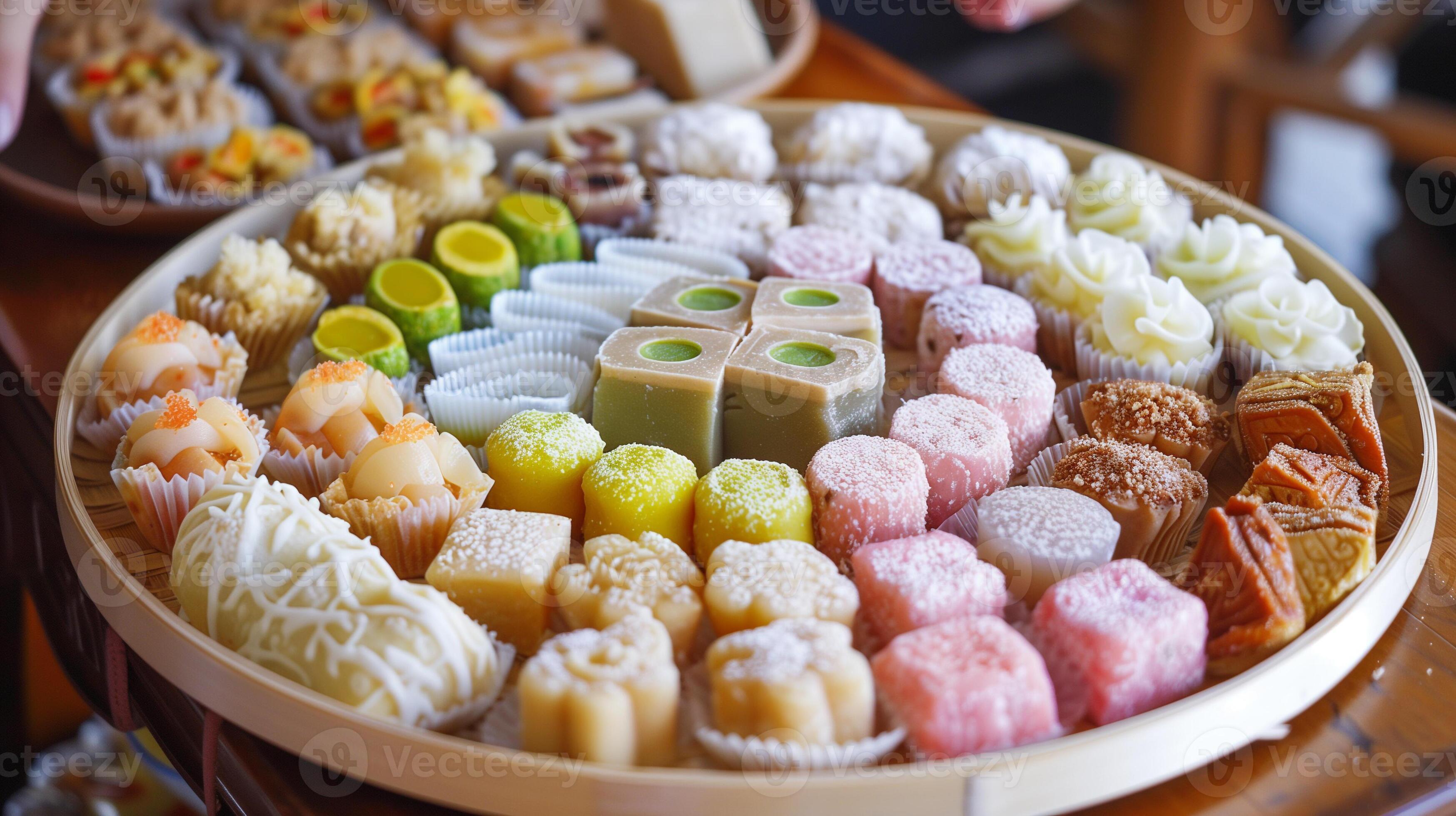South Asian Sweets: A Journey Through Tradition and Taste
South Asian sweets are more than just culinary creations — they are carriers of history, symbols of celebration, and expressions of love.
South Asia, a region rich in culture and culinary heritage, is perhaps best known for its vibrant spices, aromatic dishes, and most delightfully, its diverse array of sweets. Whether it's a grand wedding in India, a religious festival in Pakistan, a family gathering in Bangladesh, or a New Year celebration in Sri Lanka or Nepal, sweets — or "mithai" as they are commonly called — play a central role. These confections are more than just desserts; they are cultural symbols, expressions of hospitality, and essential components of celebrations.
A Historical and Cultural Backbone
The history of South Asian sweets dates back centuries, often tied closely to religious rituals and seasonal festivals. Ancient texts from the Indian subcontinent describe offerings of sweets to deities during temple rituals, a tradition that continues today. Mithai is considered auspicious, a way of expressing gratitude, joy, and good fortune.
Different regions have developed their own iconic sweets, often based on local ingredients and traditions. Despite regional variations, the common theme across the board is indulgence — rich, sweet, sometimes syrupy, often dairy-based treats that aim to satisfy not just the taste buds but also the heart.
Key Ingredients and Techniques
A few staple ingredients define most South Asian sweets. Milk and its derivatives — such as khoya (milk solids), paneer (fresh cheese), and condensed milk — are commonly used. Ghee (clarified butter) provides a rich aroma and texture. Sugar, of course, is central, and often comes in the form of syrup that infuses or coats the sweets. Flavors are enhanced with cardamom, saffron, rosewater, pistachios, almonds, and coconut.
Traditional techniques involve labor-intensive preparation. From slow simmering milk for hours to hand-forming intricate shapes, many sweets require a deep level of skill and patience, often passed down through generations.

Popular Sweets Across the Region
1. Gulab Jamun (India, Pakistan, Nepal, Bangladesh): Perhaps the most universally recognized mithai, gulab jamun consists of soft, deep-fried dough balls made from milk solids, soaked in a fragrant sugar syrup flavored with rosewater and cardamom. Warm and syrupy, it is often served at weddings and festivals.
2. Jalebi (Across South Asia): Bright orange spirals of deep-fried batter soaked in sugar syrup, jalebi is crisp on the outside and juicy on the inside. Though it looks simple, achieving the perfect balance of crispness and syrup absorption is an art.
3. Rasgulla and Rasmalai (India, Bangladesh): These Bengali sweets made from chenna (fresh cheese) balls are boiled in syrup (rasgulla) or soaked in sweet, spiced milk (rasmalai). They are soft, spongy, and delicate, offering a subtle taste compared to other richer desserts.
4. Barfi (India, Pakistan): A fudge-like sweet made from condensed milk and sugar, often flavored with fruits, nuts, or spices. Variations include coconut barfi, kaju (cashew) barfi, and pista (pistachio) barfi, each with unique textures and flavors.
5. Laddu (Across South Asia): Laddus come in countless varieties, from boondi laddu (tiny fried gram flour balls bound in syrup) to besan laddu (made with roasted chickpea flour and ghee). They are round, dense, and deeply satisfying.
6. Halwa (India, Pakistan, Sri Lanka): Halwa refers to a range of soft, pudding-like sweets made from various ingredients like semolina, lentils, or carrots. Gajar ka halwa (carrot halwa) is especially beloved in winter months for its warming, rich flavor.
7. Kheer and Payasam (India, Pakistan, Sri Lanka): These are rice puddings made with milk, sugar, and cardamom, sometimes enriched with nuts and raisins. Payasam, common in South India and Sri Lanka, often includes coconut milk and jaggery for added depth.
Sweets in Modern Times
While traditional mithai shops still thrive, the modern world has brought changes. Fusion desserts — like gulab jamun cheesecake or mango barfi ice cream — reflect the creativity of newer generations looking to blend tradition with innovation. Meanwhile, packaged sweets and online delivery have made access easier, especially for South Asians living abroad who long for a taste of home.
Health-conscious adaptations are also on the rise, with sugar-free and vegan versions of traditional sweets gaining popularity among urban populations. Despite evolving preferences, the emotional connection to mithai remains unchanged.
Conclusion
South Asian sweets are more than just culinary creations — they are carriers of history, symbols of celebration, and expressions of love. Each bite tells a story, woven through generations and across borders. Whether enjoyed in a bustling bazaar in Lahore, a temple in Tamil Nadu, or a family kitchen in Dhaka, these sweets remain a cherished part of the region’s cultural fabric, continuing to sweeten lives across the world.